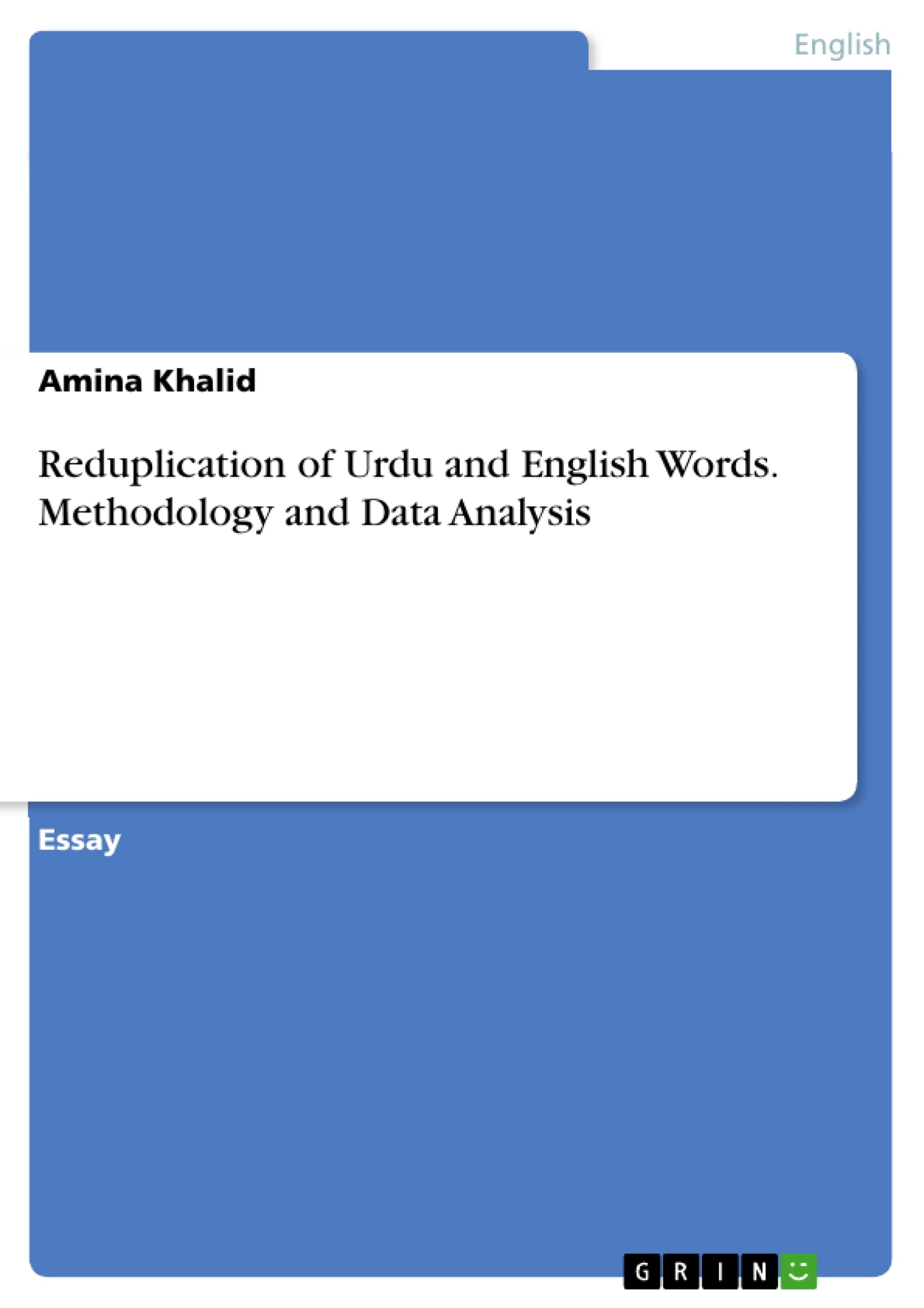Reduplication is not an alien concept to begin with. It is a type of compounding process in terms of “reduplication compound or repetitive compound”. Reduplication is a morphological process in which word, stem or root is doubled. This process takes place in two major types; total reduplication and partial reduplication. Total reduplication doubles the entire word whereas partial reduplication copies some phonological features of the word, stem or root.
The process of reduplication is found in many languages and has the quality of linguistic productivity. The productivity of reduplication process in Urdu and English language is reverse. English language has less productivity of Reduplication process but the linguistics has done a lot of work on it. There are two online dictionaries on reduplicated words in English language, where they present reduplicated words with their meanings and etymological origins. On the other hand, the productivity of reduplication process is immense in Urdu language but there is no online availability of literature on Reduplication in Urdu language. If material of some kind available online it is not very reliable.
Word Reduplication can be traced back to the 16th century from Latin word “Reduplication” or “reduplicationis” which means “doubling” and “folding”. The term “Reduplicator” is used for the base word in reduplication even the reduplicated element is called “Reduplicant”.
Reduplication plays central role in word formation process which undergoes in many languages and language groups. Reduplication process is very productive in Urdu language but the process remains almost unexplored in Pakistan. It is a rich field of linguistic investigation.
Inhaltsverzeichnis (Table of Contents)
- Introduction
- Literature Review
- Reduplication in English.
- Reduplication in Urdu language
- Methodology...
- Data Analysis...
- Total Reduplication in English
- Total Reduplication in Urdu.
- Partial Reduplication in English and Urdu
- Partial Reduplication in English
- Partial Reduplication in Urdu
- Conclusion..
Zielsetzung und Themenschwerpunkte (Objectives and Key Themes)
This study delves into the phenomenon of reduplication in Urdu and English, aiming to analyze and compare the processes involved in both languages. The research utilizes a document analysis methodology, drawing data from various sources like books, articles, dictionaries, and online media.
- Reduplication as a morphological process in language
- Types of reduplication: Total and Partial
- Productivity of reduplication in Urdu and English
- Linguistic and semantic functions of reduplication
- Comparison of reduplication patterns in Urdu and English
Zusammenfassung der Kapitel (Chapter Summaries)
The introduction provides a basic definition of reduplication and its significance in language studies. It explores the different types of reduplication, namely total and partial, highlighting their relevance in word formation. The literature review examines existing research on reduplication, particularly focusing on its productivity and applications in various languages. The study then delves into the specific characteristics and patterns of reduplication in English and Urdu, analyzing the different processes involved in both languages. The methodology section outlines the approach used for data collection and analysis, while the data analysis section presents findings on the frequency and distribution of reduplicated words in both languages. The conclusion summarizes the key findings and discusses the implications of the study for understanding the role of reduplication in language development and evolution.
Schlüsselwörter (Keywords)
Reduplication, Productivity, Reduplicant, Repetition, Urdu, English, Morphology, Word Formation, Language Studies, Linguistic Analysis, Document Analysis.
- Citation du texte
- Amina Khalid (Auteur), 2015, Reduplication of Urdu and English Words. Methodology and Data Analysis, Munich, GRIN Verlag, https://www.grin.com/document/296200




